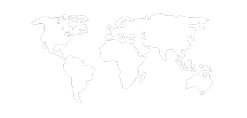 Lodz (Poland) »
Lodz (Poland) »
 Lodz (Poland) »
Lodz (Poland) »Here, you will find my best pictures from Lodz, Poland (Europe).
Below, you may also see some exquisite Lodz Drone Videos and Drone Pictures by One Man Wolf Pack, as well as regular Videos from Lodz!
Below, you may also see some exquisite Lodz Drone Videos and Drone Pictures by One Man Wolf Pack, as well as regular Videos from Lodz!
No Pictures of Lodz available
No Drone Photos of Lodz available
Blog Articles from Lodz »
Drone Videos from Lodz »
 |
Videos from Lodz »
 |
 Latest Lodz Drone Video
Latest Lodz Drone Video
https://www.youtube.com/watch?v=ZLHwRVLXv3I
Video [Internal ID 884] taken in between 2016 & 2021
and published in 2020
Drone videos and more by the One Man Wolf Pack! Digital Nomad Videographer Miroslaw Wawak, known from Netflix Series "Crime Scene Berlin: Nightlife Killer", travels all 246 countries of the world and shares his experiences, pictures & videos. Join the madness, join the Drone Around The World!
 【4K】Lodz from Above | POLAND 2021 | Cinematic Wolf Aerial™ Drone Film
【4K】Lodz from Above | POLAND 2021 | Cinematic Wolf Aerial™ Drone Film
4K UltraHD aerial footage of my drone flights in Lodz (Poland), showing the city park, stadium of Widzew Lodz and many other places of interest from Above; project finished & uploaded on 2020-12-21 by One Man Wolf Pack UltraHD Drone Footage. #drone #aerial #dronefilm
▶️ Drone - Lodz 2021 @ 0:00
» Media data: This drone video (Internal ID 884, taken in between 2016 & 2021 and published in 2021) is an extraction of my Lodz 4K Drone Video Footage & Lodz Drone Pictures. Copyright protected Footage and Photos on Sale. For inquiries, please contact me via E-Mail or my Blog.
About Lodz: Łódź, written in English as Lodz, is the third-largest city in Poland and a former industrial centre. Located in the central part of the country, it has a population of 679,941 (2019). It is the capital of Łódź Voivodeship, and is located approximately 120 kilometres (75 mi) south-west of Warsaw. The citys coat of arms is an example of canting, as it depicts a boat (łódź in Polish), which alludes to the citys name. Łódź was once a small settlement that first appeared in 14th-century records. Despite being granted town rights in 1423, it remained the private property of the Kuyavian bishops and clergy until the late 18th century. The Second Industrial Revolution brought rapid growth in textile manufacturing and in population due to the inflow of migrants, notably Germans and Jews. Ever since the industrialization of the area, the city has struggled with multinationalism and social inequalities, which were documented in the novel The Promised Land by Nobel Prize-winning author Władysław Reymont. The contrasts greatly reflected on the architecture of the city, where luxurious mansions coexisted with redbrick factories and dilapidated tenement houses. The industrial development and demographic surge made Łódź one of the largest cities in Poland. Under the German occupation during World War II, Łódź was briefly renamed to Litzmannstadt in honour of Karl Litzmann. The citys large Jewish population was forced into a walled zone known as the Łódź Ghetto, from which they were sent to German concentration and extermination camps. The city itself sustained insignificant structural damage during the war and became Polands temporary seat of power in 1945.
▶️ Drone - Lodz 2021 @ 0:00
» Media data: This drone video (Internal ID 884, taken in between 2016 & 2021 and published in 2021) is an extraction of my Lodz 4K Drone Video Footage & Lodz Drone Pictures. Copyright protected Footage and Photos on Sale. For inquiries, please contact me via E-Mail or my Blog.
About Lodz: Łódź, written in English as Lodz, is the third-largest city in Poland and a former industrial centre. Located in the central part of the country, it has a population of 679,941 (2019). It is the capital of Łódź Voivodeship, and is located approximately 120 kilometres (75 mi) south-west of Warsaw. The citys coat of arms is an example of canting, as it depicts a boat (łódź in Polish), which alludes to the citys name. Łódź was once a small settlement that first appeared in 14th-century records. Despite being granted town rights in 1423, it remained the private property of the Kuyavian bishops and clergy until the late 18th century. The Second Industrial Revolution brought rapid growth in textile manufacturing and in population due to the inflow of migrants, notably Germans and Jews. Ever since the industrialization of the area, the city has struggled with multinationalism and social inequalities, which were documented in the novel The Promised Land by Nobel Prize-winning author Władysław Reymont. The contrasts greatly reflected on the architecture of the city, where luxurious mansions coexisted with redbrick factories and dilapidated tenement houses. The industrial development and demographic surge made Łódź one of the largest cities in Poland. Under the German occupation during World War II, Łódź was briefly renamed to Litzmannstadt in honour of Karl Litzmann. The citys large Jewish population was forced into a walled zone known as the Łódź Ghetto, from which they were sent to German concentration and extermination camps. The city itself sustained insignificant structural damage during the war and became Polands temporary seat of power in 1945.
»
Stock from 160+ Countries | 2025
 Search 🔍
Search 🔍 Quick Links 🔥
Quick Links 🔥»
 Lodz
Lodz
According to UN List: 173/193 (90%)
[41/58]  »Africa
»Africa
[ 1/ 1] »Antarctica
»Antarctica 
[43/46] »Asia
»Asia
[60/60] »Europe
»Europe 
[41/41] »North America
»North America 
[22/26] »Oceania
»Oceania
[14/14] »South America
»South America 
[ 1/ 1]

[43/46]
[60/60]

[41/41]

[22/26]
[14/14]

Want more? Check out the
»One Man Wolf Pack YouTube-Channel
Miroslaw Wawak
One Man Wolf Pack
Paraguay
© Copyright Information
»Full Site Notice | © One Man Wolf Pack 2025
Page Views: 867











